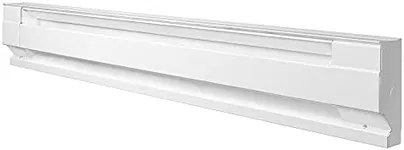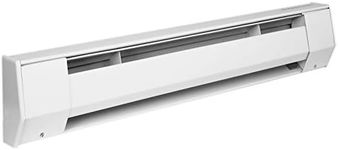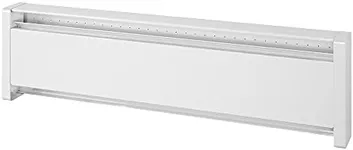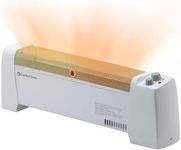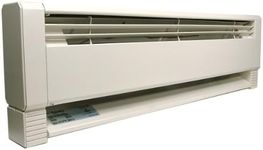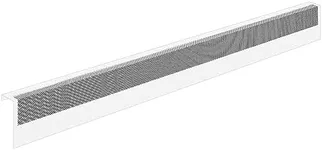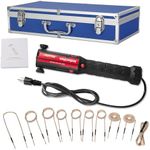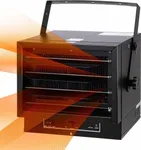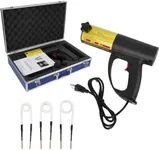Buying Guide for the Best Baseboard Heaters
Baseboard heaters are a popular choice for home heating due to their simplicity, efficiency, and ease of installation. When choosing a baseboard heater, it's important to consider several key specifications to ensure you select the right model for your needs. Understanding these specifications will help you make an informed decision and ensure your home stays warm and comfortable during the colder months.WattageWattage measures the power output of the heater and is crucial for determining how much heat the unit can produce. Higher wattage means more heat output. Typically, baseboard heaters range from 500 to 2000 watts. For small rooms or supplemental heating, a lower wattage (500-1000 watts) may suffice. For larger rooms or primary heating, you may need a higher wattage (1500-2000 watts). Consider the size of the room and the level of insulation when choosing the wattage.
LengthThe length of a baseboard heater affects its heat distribution. Longer heaters can distribute heat more evenly across a room. Baseboard heaters come in various lengths, usually ranging from 2 to 8 feet. For smaller rooms, shorter heaters (2-4 feet) may be adequate, while larger rooms may benefit from longer heaters (6-8 feet). Measure the available wall space and consider the room's layout to determine the appropriate length.
VoltageVoltage is the electrical potential required to operate the heater. Baseboard heaters typically come in 120V or 240V models. 120V heaters are suitable for smaller spaces and are easier to install, as they can be plugged into standard household outlets. 240V heaters are more powerful and efficient for larger spaces but require a dedicated circuit. Check your home's electrical system and consult an electrician if necessary to determine the appropriate voltage for your heater.
Thermostat TypeThe thermostat controls the temperature of the heater. There are two main types: built-in and wall-mounted. Built-in thermostats are integrated into the heater and are convenient for individual room control. Wall-mounted thermostats offer more precise temperature control and can manage multiple heaters in different rooms. If you prefer simple, localized control, a built-in thermostat may be sufficient. For more advanced control and energy efficiency, consider a wall-mounted thermostat.
MaterialThe material of the heater affects its durability and heat conduction. Common materials include steel, aluminum, and ceramic. Steel heaters are durable and provide consistent heat but can be heavier. Aluminum heaters are lightweight and heat up quickly but may not retain heat as long. Ceramic heaters offer efficient heat distribution and are often quieter. Consider the room's usage and your preference for heat retention and noise level when choosing the material.
Safety FeaturesSafety features are essential to prevent accidents and ensure safe operation. Look for features such as overheat protection, tip-over switches, and cool-touch exteriors. Overheat protection automatically shuts off the heater if it gets too hot, preventing fires. Tip-over switches turn off the heater if it is knocked over, which is especially important in homes with children or pets. Cool-touch exteriors prevent burns by keeping the heater's surface temperature low. Prioritize safety features based on your household's needs and potential risks.
